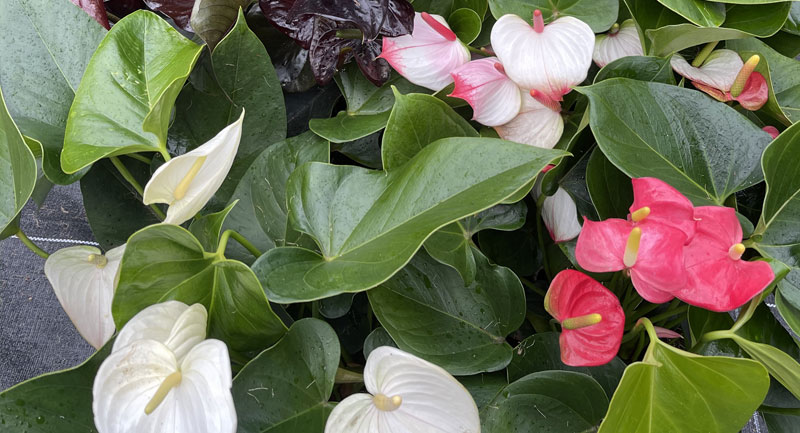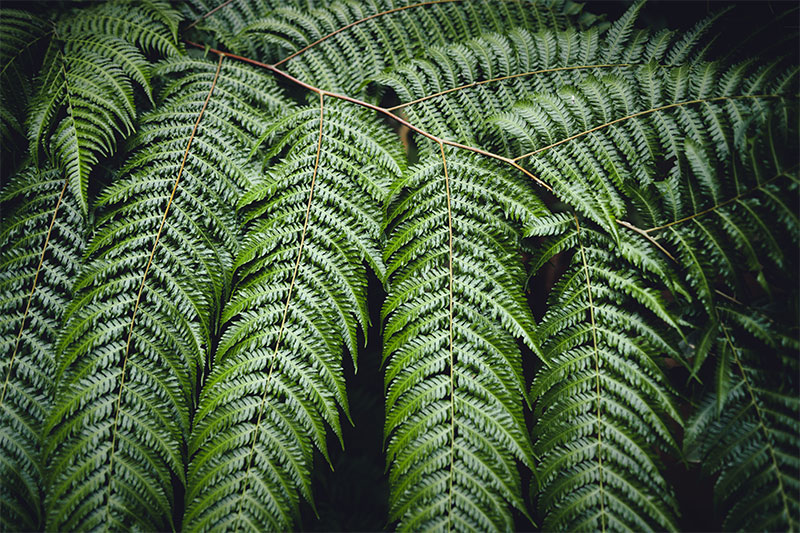When the victim is an indoor plant, the No. 1 cause of death is too much water. The No. 2 cause of death is not enough water.
The twin perils of under and over-watering force many indoor plant lovers toward plants that can safely be watered about as often as baristas get a beard trim – sansevieria (mother-in-law’s tongue), bromeliads, aspidistra. As lovely and tolerant of neglect as these plants are, they look even better when lovingly tended, and when surrounded by other less hardy plants.
Fern grower Peter Heaton told an audience of confessed serial indoor plant killers at the Queensland Garden Expo in Nambour recently that their crimes were understandable. The difficulty with watering potted plants, he says, is there are too many variables. How much water a plant needs depends on its size; the size of the pot it’s in; the composition of the potting mix; and the airflow, temperature and humidity of its position on any given day.
Because that’s an algorithm worthy of Fermat, Peter recommends putting plants in pots on a saucer. Water from the top of the pot until there is water in the saucer and don’t water again until the saucer is dry. The plant roots will take up water from the saucer as needed. If it takes more than a week for the saucer to dry out, it’s too big for the size of the pot, and root rot is a risk, so scale back the saucer.
Fill the saucer with dark gravel. This disguises the weak tea colour of water leached through the potting mix. Evaporation from the pebble-filled saucer will supply all the humidity needed to keep plants happy, including ferns. Misting is not just unnecessary, says Peter, but a bad idea, as damp foliage is a good environment for the growth of fungus.
So that’s the watering sorted. The other issue is feeding. Peter says we are mistaken in thinking of our potted plants as mini gardens. Better to consider them hydroponic systems, with the pot there just to hold them up. This means you need to feed as well as water them. Peter advocates a not-much-often regime. Add fertiliser to the watering can every time you water, at one-quarter strength of the recommended rate, alternating an all-purpose soluble food such as Thrive or Aquasol with a seaweed solution like Seasol.
Every year, refresh the potting mix by taking the plant out of its pot, composting the old mix and repotting into fresh, high-quality mix, with a sprinkle of slow-release fertiliser at the bottom of the root ball and just under the surface of the mix. Add an occasional spray with the hose outdoors to rinse off dust for a total care regime that Peter promises will result in stress-free, thriving indoor plants.
Position
Ferns enjoy moist conditions, sheltered from midday and afternoon sun. Up to 4 hours of sun a day is fine. They’re an under canopy plant, so therefore enjoy indoor and outdoor life.
Indoors
One of the main problems with growing ferns indoors is the lack of humidity. A simple solution is to group the pots on a shallow tray containing water in which pebbles or gravel are placed . Ensure the pots are above the water level. This creates a microclimate which gives moisture to the fronds.
Watering
The only way to really tell if a fern needs watering is to feel the soil around the plant and if it feels dry, it needs watering. If it is still wet, DO NOT water. The most efficient way to water is to have your ferns in self watering pots.
Repotting
A Fern Potting Mixture is recommended for repotting ferns, or you can add approximately 20% of Peat Moss to any potting mix you have. To see whether or not a fern needs repotting, simply tap the plant out of its pot and have a look at its root system. If the roots have reached the sides and bottom of the pot, the fern needs repotting. It’s best only to go up 1 or 2 sizes in pot at any one time, or slice the root ball in half, from top to bottom and repot into two containers the same size as the original pot.
Soils (Outdoor)
Ferns have a very fine root system, so you need to ensure that the roots have enough air and water available to them. This is achieved by applying a good cover ( approx. 100mm) of Rainforest Mulch and Leaf Mould to the area before you plant your ferns.
Fertilizer
A 5-6 month slow release fertilizer with trace elements should be used at the recommended rates when repotting or planting out and a water soluble fertilizer should be used for watering on a fortnightly basis, at the rates recommended on the fertilizer packaging.
Pests
Ferns don’t have many pests that worry them. Some of the ones that do are slugs and snails, this is mainly outside and can be seen by the fern not producing any new growth. Mealy bug and fern mite are found on the underside of the fronds like little white specks. If either of these problems occur consult your local nursery for the right advice on which is the best spray to use.
Pruning
Cut off any dead fronds at the base of the plant and if the fern gets scrappy looking, or if you have a bad pest problem, cut the whole fern off just above the ground level and let the fern reshoot. (Warning: Do not do this with tree ferns) This is best done in late winter or early spring.
Growing ferns from spore at home
When spore is starting to be released from the frond, cut that frond off and place in a paper bag to let it dry. The spore is then the fine dust in the bottom of the bag. Get a clay brick and place it in a saucer of water and the water level 1/4 to 1/3 of the way up the brick, you must keep the water in the saucer for the whole time. Sprinkle the spore over the brick and place in a warm position out of the sun. Within a few months you should start to see the first signs of green. In the next few months it should start to look like moss. Once you have a good cover of moss keep the plants wet with a light spray of water (this may have to be done a few times a day) until you start to see the ferns shooting up from the moss, gently break off clumps and plant in pots, you now have grown your very own ferns.
More information may be found in these books.
Encyclopaedia of Ferns, by David L. Jones
Maidenhair Ferns in Cultivation, by Christopher J. Goude



